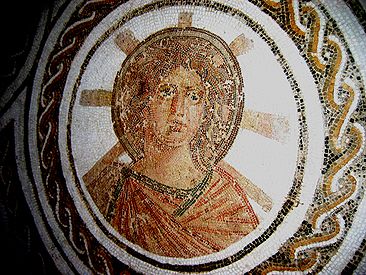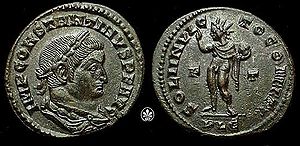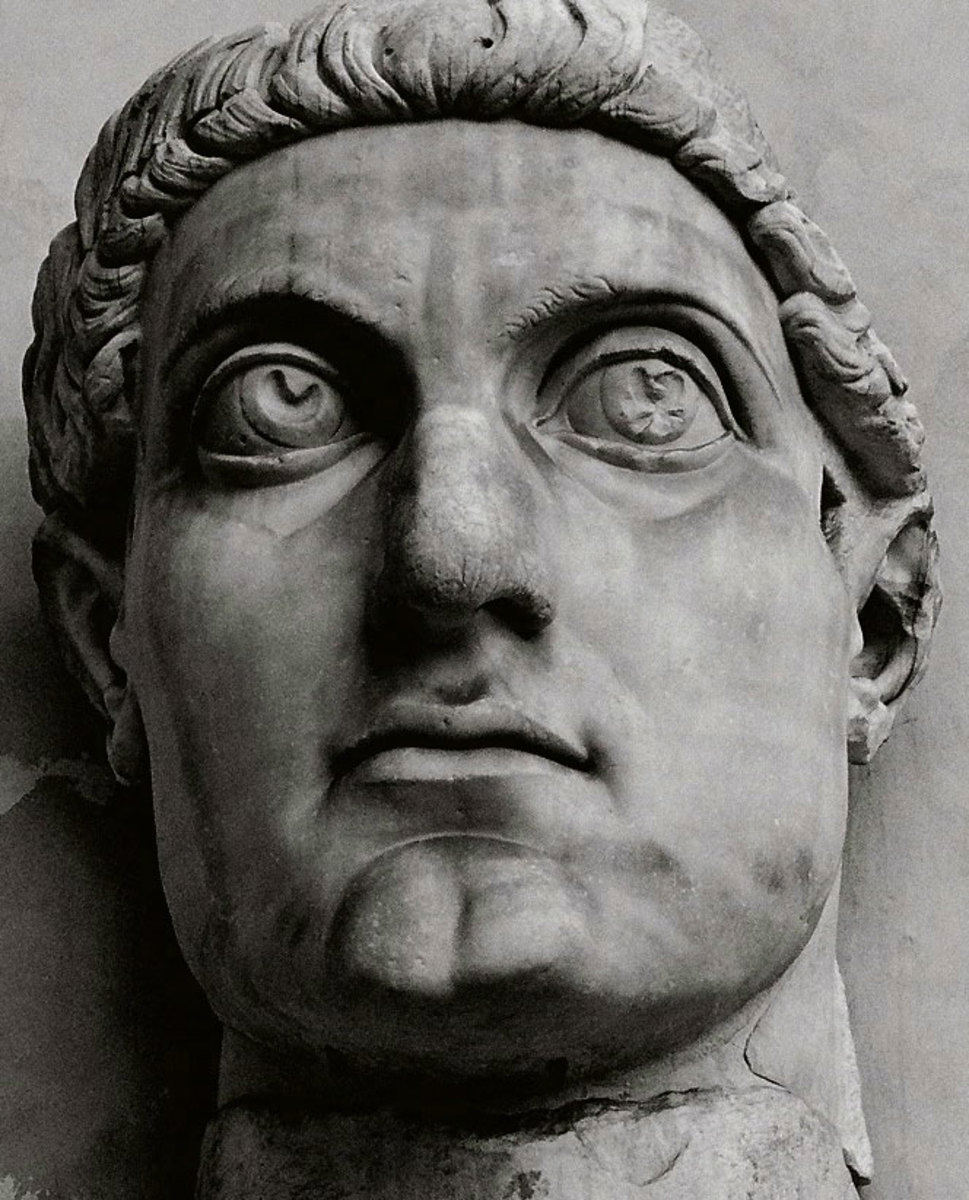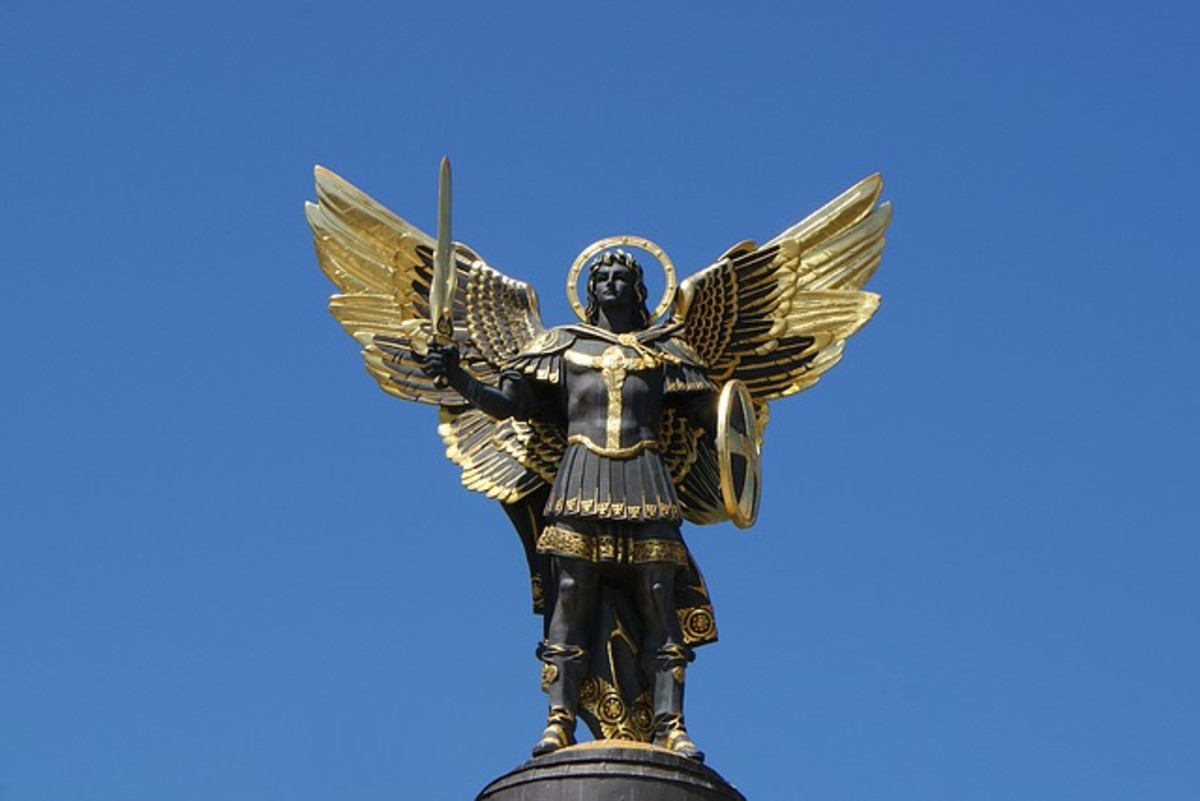A Brief History Of The NT


The Old Testament is about the law. The New Testament by contrast is about the life and death of Jesus.
As with the Old Testament I want to explore some of the influences that went into creating the New Testament and find out who the early Christians really were, as well as find out how the current state of Christianity came to be.
The Middle East at the time of Jesus was a hotbed of religions and new philosophies brought over by Rome. To understand all of this we have to first look at who the Romans were and what they believed.
Legend tells us that Rome was founded by Romulus on 21st of April 753 BCE. But the date is shaky at best. From its earliest days it was a mixed culture. The story is that Evander was a Greek exile who lived with his family in the area we now call Rome, when it was just wild pasture land. He built a home there and then he built a large alter to Hercules where the Forum was later built. He met a man named Aeneas who was a refugee from Troy, and together they built a small settlement with their families. It was Aeneas who brought with him the Lares and the Penates. Both of them groups of gods of the family and household. The Penates were gods of the pantry. Aeneas himself claimed to be a descendent of Venus.
Romulus and Remus were descendants of Aeneas. His great granddaughter, a high priestess of Vesta was a virgin impregnated by Mars. Vesta was of course the goddess of the hearth and in the category of gods called Lares. The way she became a Vestal Virgin was through her uncle Amulius. He had killed her father Numitor so he could take the throne of Alba Longam just south west of Rome. Because he didn’t want any heirs coming from Numitor’s side of the family he forced Numitor’s daughter into the priesthood. When he heard she was pregnant he ordered that as soon as they were born the twins were to be left to die of exposure. Romulus and Remus were found and saved by a female wolf, and then taken in by a shepherd’s family.
Early Romans were animists. That means they believed in many spirits and gods. Before even the founding of the city, the region was already being influenced by Greece and Troy. After Romulus’s first victory in battle he built a temple to Jupiter, which became Rome’s first officially sanctioned religion, and continued to rank high right up to the time of Christianity..
The Romans had an interesting attitude toward gods. They felt that the more they had on their side the better, so they were tolerant of all religions at first. They had ancestor religions like in Japan. Insulting the ancestors was a criminal offence. They had spirit cults, mostly to do with the protection of home and family. They worshiped demigods like Hercules and gods like Jupiter and Mars.
Numa was Romulus’s successor. By the end of his reign, the basic configuration of Roman society, all its leading families and their religions were written into law by the senate and agreed to by the people.
Cicero wrote that for the city to prosper it was thought that everyone had to be religious. Those who were not were felt to be traitors, because if the gods got insulted, Rome would suffer. They considered themselves the most religious people in the world, and their success was the proof.
From the very beginning Rome used different religions from different regions to rule. They would blend these new religions with Roman religions and traditions and make them their own, then feed them back to the people they came from in order to help integrate them into Roman society.
One interesting fact is that Rome had a habit of grouping three deities together as one. Jupiter was at first grouped with Mars and Quirinus. They were thought to be aspects of one god. Later the names of Mars and Quirinus were changed to Juno and Minerva respectively. But little else changed about their relationship. Another triad grouping were the god’s Liber, Libera, and Ceres.
This was not an uncommon thing to do in Egypt at the time either. They usually only grouped them in twos, like Ra and Amun which became Amun-Ra. Even the Hindus group gods together as the manifestation of the one god, Krishna. He is known by at least eight different names and depending on the sect he may be all the gods put together or any number of about eight thousand.
Each section of the population in Rome had their own gods and goddesses. Family cults were rampant. The army had its own cult. There were even cults that sacrificed children. Junius Brutus put a stop to the practice by forbidding it and slaughtering anyone caught doing it, but he couldn’t stop the religion itself. They took to symbolically sacrificing their children by replacing them with small woolen dolls called Maniae.
Like the Jews of Moses, the Romans found ritual human sacrifice to be abhorrent, and like the Jews they used it as an excuse to invade civilizations like that of Gaul, and closer to home, Carthage. It was the only thing at that time that could automatically make a religion illegal in Rome. All others were usually welcomed unless they insulted Rome or Roman ancestors.
The only exception was the cult of the gladiators. They thought of each killing they did as a sacrifice to their gods. The belief wasn’t sanctioned as such, but it wasn’t condemned as the killings were done for the state. In other words, the state didn’t care what the gladiators believed, as long as they did their job.
To Rome, religion was a contract between the gods and spirits and mankind. It was a duty rather than a matter of personal conscience.
The Jews relationship with Rome is an interesting one. Around 40 BCE the Romans named Herod king of the Jews. He had asked them for help getting the thrown of Israel back, as a favour for having helped Rome win a strategic battle. But what really made the Romans take notice was that he told them Antipater, the current king of Israel had helped finance Caesar’s murderers. Rome did as he asked, but then annexed Israel, making him king but subordinate to Rome.
Herod was not liked by the Jews, and many did not see him as a real Jew because he was from the region of Idumaea which had been taken over by the Maccabeans. In 140 BCE they had forced all the residents of the region to convert to Judaism, leave, or die.
Herod was a tyrant that murdered his own people as well as many rabbis. On the other hand he rebuilt the second temple of Jerusalem and seems to have considered himself a Jew.
The Romans did not like Judaism because they could not relate to the idea of just one god. It was foreign to their entire mind set. But it was tolerated and eventually Jews were invited to live in Rome itself.
So why did Rome eventually persecute Christians? Well they didn’t always. There were different times Rome persecuted Christians, and there is no evidence that they did so before well after Jesus was dead. There are three reasons historically given as to why persecutions took place. The first is that they refused to worship the Roman Emperor and Roman gods. But this one doesn’t wash because the Jews didn’t either, and they lived with the Romans in relative peace unless they rebelled.
The second reason is that Christianity teaches that the meek will inherit the earth, and that the wealthy will be humbled while the poor will lifted up. That really wasn’t what Roman society wanted to hear. They had enough with slaves that revolted as it was, and Christianity was seen as anti slavery, while Judaism was not. But there is some evidence that Christian sects actually attacked Pagan temples because they felt martyrdom was the essence of being Christian. There was also their insistence on converting everyone they met. They were seen as subversives and trouble makers.
The third reason given is that Nero outlawed Christianity when he blamed them for the fire that nearly destroyed Rome. Of course, history shows that Nero set the fire himself so he could clear the land for a new palace, and while that explains one episode of persecution it doesn’t explain them all, or the general dislike Roman citizens had for them. In any case, they were not considered good Roman citizens.
Now we all know that the first Christians were Jews who accepted Jesus as the messiah that would set them free from Rome and restore them. But Jesus wasn’t the only messiah in town. John the Baptist was considered the real messiah by some sects. So we have to realize we are dealing with a multitude of Jewish sects which are at this time period breaking off from orthodox Judaism.
Some of the Jewish Christian sects are as follows: The Ebionites, the Nazarenes and The Essenes.
The Ebionites (meaning: the poor) were a sect which thought poverty was the best way to worship. They were followers of James, Jesus brother, and considered Pauline Christianity a heresy. They still exist today. They even have their own Jewish version of Matthew’s gospel.
The Nazarenes were a group that followed Matthew as well. His was the only gospel they recognized. They considered themselves Jews, keeping all the laws of the OT.
The Essenes were a sect that also valued poverty. They also abstained from all worldly pleasures, went through a baptism ritual daily, and did not marry. They followed John the Baptist as their messiah.
The Nasrani followed Thomas. His ministry was in India. Each country the apostles preached in, they created different sects of Christianity with their own set of beliefs and values. Even Jesus mother and some of his family went out and preached his message in their own way. Each had followers.
There were also the Gnostic cults of Christiantiy. Some followed Thomas and considered his gospels as cannon. Other gospels were written by other apostles, and even one from the perspective of Mary Madeline. This is likely where the idea for the story that she was Jesus lover originated from. It and the gospel of Judas were recently found and dated to around 400 CE. In Judas’s gospel it says that Jesus had asked Judas to betray him. This a departure from the four texts the Roman Church later accepted as cannon.
But on a personal note it does make sense. If the crucifixion of Jesus was planned, as is essential to present day Christianity, it needed some way of being executed. But I won’t go into that debate here.
The point of the matter is that Christianity was a fragmented group of independent cults who had a number of texts associated with Jesus, including gospels from almost all the 12 apostles. Each sect had its own set of texts. Some they shared with other sects and some they did not. There have been reports of as many as 400 letters and texts and gospels that were circulating by 300 CE. Some even spoke of reincarnation.
So we have Jesus himself preaching to the Jews and converting some of them to his new way of thinking. Then after his death his family stays in the region and continues his work converting Jews. At the same time John the Baptist gets converts who believe he is the messiah, and Jesus is just a prophet.
Shortly after his death his apostils go out into the world, each taking their own region, and there they convert Jews and gentiles alike.
But what influences did Jesus have? Was he preaching Judaism with a new message? Or was he also teaching other ideas that were not Jewish? It happens that there were a lot of new religions in that time period. Many like the Greek Cynics and Stoics had similar messages of love for your neighbour, poverty, an end to slavery and renouncing wealth. To be fair, the Hellenism that would creep into Christianity probably started happening very early on. Jesus seems to have been a focal point for a number of ideas that were just starting to gain acceptance in the region. Most of these new ideas were coming from Greece and the philosophies and religions Socrates and Plato inspired in their followers. Even if Jesus was coming up with these new ideas independently, they were not foreign to the people of the region and were already gaining interest and acceptance by the time Jesus started preaching.
To make matters more interesting, Paul of Tarus was half Jewish on his mother’s side and half Roman on his father’s side. He was a self proclaimed apostil. He is said to have helped the Romans capture and persecute Jewish Christians. There is also some debate over whether he was on a mission to gather information about Christians in Damascus when he had his revelation.
Most of the Jewish Christian sects did not like him or his version of Christianity. He said himself that he was upset that people were following other teachings than his own. He had words with Peter about teaching a different doctrine and insulted him. John had arguments with him as well.
But the simple fact of the matter is that Paul appealed more to Roman sentiment than did the other apostles, and he was the teacher of the gentiles. He was not converting Jews; he was converting anyone else he could, and taking Christianity into a new direction. One not appreciated by the Jews, Jewish Christians, nor the remaining apostles.
Rome itself was gathering new religions into its fold at the time as well. Mithraism was one of them. It was the religion of the time for the army, and was only practiced by soldiers. From all accounts it differs from Zoroastrian Mithraism and there is debate over whether it was just another melding of a religion into something more Roman or a completely home grown religion. But it had some aspects of Christianity associated with it. Most notable is that they had a supper at every meeting wherein the priest would hold up a cup of bull’s blood and say “this is my blood” And then hold up bread and say: “This is my body”. No one is sure if this originated with Jesus or if he heard of the practice and transformed it to suit his needs. But this form of Mithraism was an influence in the region starting in the early first century.
Paul must have know of this religion himself as Tarsus was a hotbed of it, and his father was a Roman soldier.
Sol was also popular with Roman politicians in the first century and right up to the rule of Constantine. But he was worshiped as Apollo for most of that time. Again, there was a mixing of gods and soon Apollo became Sol. The religion gained it’s height of popularity through Emperor Aurelian. The sun played a large part in many religions. In Mithraism it was said that Mithras was part of a trinity consisting of god, the son (himself), and the eye of god, the sun. He was also depicted as being born from a rock. Not exactly a virgin birth, as some suggest. But did Mithras play a big part in Christianity through Rome? Probably not. But Sol did. Aurelian was the first emperor to decide he needed one god to unit all the people of Rome, and in 271 he made Sol-Apollo the official god of Rome. "One god, one empire". But he didn’t persecute other religions. This was a real departure from the norm in Rome, where up till now they had worshiped almost all the gods.
However, after Aurelian, Diocletian became Emperor, and while he adopted Sol as the god of Rome, he started outlawing all other gods. The Christians were not the only ones being persecuted anymore.
Although Constantine helped Diocletian in the persecution of Christians when he was serving him, his heart wasn’t in it. His mother was a Christian who had founded a church in honour of Luke, in her native town of Helenopolis. When he became emperor himself he abolished religious persecution altogether. He made a special for Jews saying they could not own Christians as slaves.
Constantine was no saint himself and his way to the top was not without conquests and treachery. But that was the way things were done in Rome. He was a very smart politician. There are some that believe he saw a Christian revolt brewing in the people, and that he accepted Christianity for Rome to avoid a civil war. But that is not clear from recorded history.
When he finally converted to Christianity himself at 40 he told Christians all over Rome that he attributed his success in politics to the one Christian god. He built many Churches and basilicas and financed them. He gave back property that was confiscated from Christians in the last persecution. He gave Christians high office and granted Christians privileges not afforded to others.
Yet after his victory at Milvian Bridge he had an arch built to commemorate it. On it are symbols of the Pagan gods Diana and Apollo. He also decreed that both Christians and non-Christians had to come together to observe the day of the sun. His coins all still carried an image of him on the front, and of Sol on the back. He also dressed as Sol/Apollo when he dedicated the new capital of Constantinople. Constantine decreed the first Sunday closing law in history in 321 CE. But he was doing it to commemorate the "day of the sun" not the traditional Christian Sunday.
He seemed to want to meld the two religions together, as was Roman tradition, and had some success. In 325 he ordered the Council of Nicaea where they decreed the trinity as cannon and made Arianism a heresy. Remember that the Jewish Christians didn’t believe Jesus was god. But the trinity fits very well with Rome’s tradition of melding two and three gods together as one. The Christian god also began being known as the god of light. Even in the fifth century Pope Leo talked about how Jesus birth coincided with the equinox. The 25th of December is the traditional celebration day of Sol, and even the church admits that it was chosen as Jesus birthday was to appease and meld the pagans into Christianity.
Constantine also decided to meld all the Christians sects into one. The churches had already been trying to do this from the beginning, and the word Catholic, meaning universal, had been in use since the early second century. While Constantine didn’t choose the books that would go into the bible, Rome itself and her history did influence the outcome to a great extent, as did Constantine’s rulings concerning matters of doctrine. He helped standardize, and enforce the standardization, of the religion. A lot of Paganism did merge with Christianity naturally through exposure and time.
After decreeing the Donatists heretics Constantine led an army against them. It was the first time in the history of Christianity that Christian had persecuted Christian. It was not a coincidence that Constantine waited until his deathbed to be baptized. He wanted make sure he was absolved at the last minute, so he would no more sins to pay for after his death.
With Rome’s help and influence a Universal Christian Church was realized. For centuries the Christians had one universal church in the east and one in the west. Reading the bible was not allowed in the Western church. It was thought that only the Pope and select bishops could interpret it correctly. One reason cited was that it was too interpretable and could be divisive. Priests were given catechisms to study and teach instead. Besides which, most common people couldn’t read and only the very rich could have afforded a copy, as they were all hand written.
Catholicism ruled most of the world for centuries. But then the reform came. Soon after Luther broke away from the Church and made the bible accessible to everyone through the advent of the printing press, the Church became fragmented again, just as had been feared.
Now there is no unified church anymore and Christianity is back where it started, but without most of its original texts and context.








